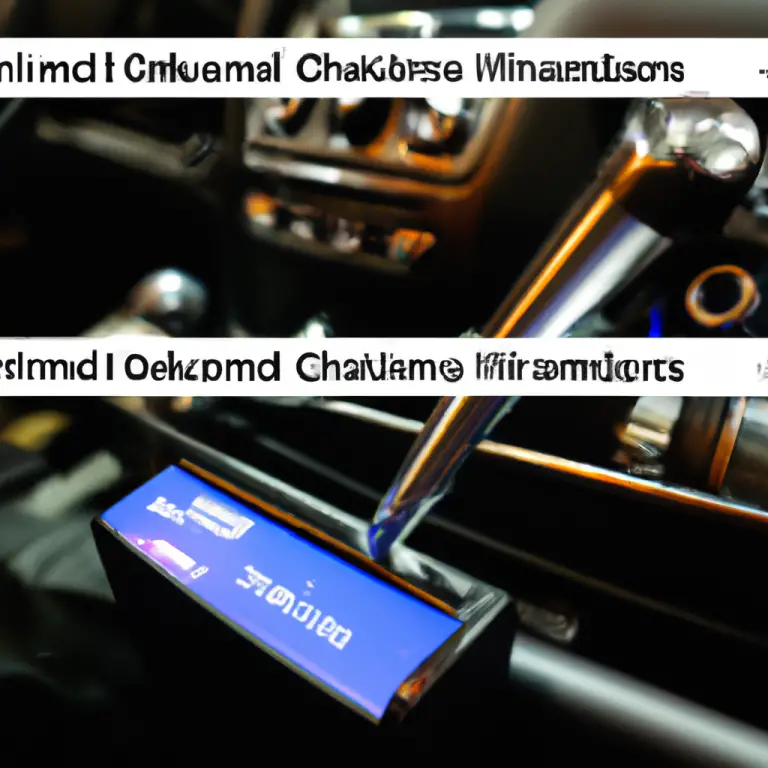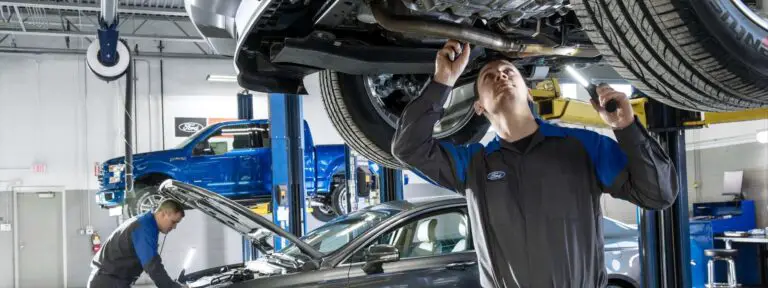How Long Is Ford’s Emissions Warranty? Full Breakdown by Coverage Type
As a Ford owner, buyer, or DIY mechanic, understanding your vehicle’s emissions warranty is key to ensuring compliance with environmental standards and managing repair costs. The Ford emissions warranty covers components that control vehicle emissions, ensuring your Ford meets federal and state regulations. The duration of this warranty varies depending on your vehicle type and location, with specific provisions for California residents. In this guide, we’ll break down the Ford emissions warranty duration, what it covers, how to check your warranty status, and what to do if your coverage has expired.
What is Ford’s Emissions Warranty?
Definition and Purpose
The Ford emissions warranty is a critical part of the standard warranty package, designed to cover repairs or replacements of emissions-related components that fail due to defects in materials or workmanship. This warranty ensures your vehicle complies with federal and state emissions standards, reducing harmful pollutants and helping you pass mandatory inspections like smog checks. It’s particularly important for maintaining your vehicle’s performance and resale value.
Types of Emissions Warranties
Ford offers several types of emissions warranties, each tailored to specific regulatory requirements:
- Federal Emissions Warranty: Covers emissions-related parts to ensure compliance with federal standards set by the Environmental Protection Agency (EPA).
- Emissions Performance Warranty: Ensures the emissions control system functions correctly, meeting required emissions output standards.
- California-Specific Emissions Warranties: For vehicles registered in California, additional warranties align with the state’s stricter emissions regulations, including provisions for Partial Zero-Emissions Vehicles (PZEV).
For more on Ford’s overall warranty structure, see our guide on Understanding Ford Extended Warranties.
Ford Emissions Warranty Duration by Vehicle Type
The duration of Ford’s emissions warranty depends on the vehicle’s Gross Vehicle Weight Rating (GVWR) and whether it’s registered in a state like California with unique emissions standards. Below is a detailed breakdown:
Passenger Cars and Light Duty Trucks (up to 8,500 lbs GVWR)
For most Ford passenger cars and light-duty trucks, the emissions warranty durations are as follows:
- Federal Emissions Warranty:
- 8 years or 80,000 miles for major components like catalytic converters, electronic emission control units, and onboard emissions diagnostic devices.
- 3 years or 36,000 miles for all other emissions-related parts.
- Emissions Performance Warranty:
- 8 years or 80,000 miles for catalytic converters, electronic emissions control units, and onboard emissions diagnostic devices.
- 2 years or 24,000 miles for other covered parts.
Heavy Duty Vehicles (8,500–19,500 lbs GVWR)
For heavier Ford vehicles, such as certain commercial trucks:
- Federal Emissions Warranty:
- 5 years or 50,000 miles for all emissions-related parts, including air conditioning refrigerant components (non-vocational vehicles).
- 2 years or 24,000 miles for tire defects affecting emissions (vocational vehicles).
- Emissions Performance Warranty:
- 5 years or 50,000 miles for all covered parts.
California Emissions Warranties
California has stricter emissions standards, resulting in unique warranty durations:
- GVWR ≤ 14,000 lbs:
- Short-term Defects Warranty: 3 years or 50,000 miles for emissions-related part repairs or replacements.
- Long-term Defects Warranty: 7 years or 70,000 miles for specific emissions-related parts (e.g., those listed in Ford’s warranty guide).
- Performance Warranty: 3 years or 50,000 miles for repairs needed to pass Smog Check inspections.
- GVWR > 14,000 lbs:
- Defects Warranty (Gasoline): 5 years or 50,000 miles for emissions-related part repairs or replacements.
- Defects Warranty (Diesel): 5 years or 100,000 miles for emissions-related part repairs or replacements.
- Partial Zero-Emissions Vehicle (PZEV):
- Defects & Performance Warranty: 15 years or 150,000 miles for emissions-related part repairs/replacements and Smog Check inspection repairs.
Warranty Duration Table
| Vehicle Type | Warranty Type | Duration | Covered Components |
| Passenger Cars/Light Trucks (≤ 8,500 lbs GVWR) | Federal Emissions Warranty | 8 years or 80,000 miles | Catalytic converters, electronic emission control units, onboard diagnostic devices |
| 3 years or 36,000 miles | All other emissions-related parts | ||
| Emissions Performance Warranty | 8 years or 80,000 miles | Catalytic converters, electronic emission control units, onboard diagnostic devices | |
| 2 years or 24,000 miles | All other covered parts | ||
| Heavy Duty Vehicles (8,500–19,500 lbs GVWR) | Federal Emissions Warranty | 5 years or 50,000 miles | All parts, including air conditioning refrigerant components (non-vocational) |
| 2 years or 24,000 miles | Tire defects affecting emissions (vocational vehicles) | ||
| Emissions Performance Warranty | 5 years or 50,000 miles | All covered parts | |
| California Emissions (GVWR ≤ 14,000 lbs) | Short-term Defects Warranty | 3 years or 50,000 miles | Emissions-related part repairs/replacements |
| Long-term Defects Warranty | 7 years or 70,000 miles | Specific emissions-related parts | |
| Performance Warranty | 3 years or 50,000 miles | Smog Check inspection repairs | |
| California Emissions (GVWR > 14,000 lbs) | Defects Warranty (Gasoline) | 5 years or 50,000 miles | Emissions-related part repairs/replacements |
| Defects Warranty (Diesel) | 5 years or 100,000 miles | Emissions-related part repairs/replacements | |
| California PZEV | Defects & Performance Warranty | 15 years or 150,000 miles | Emissions-related part repairs/replacements, Smog Check inspection repairs |
How to Check Your Ford Emissions Warranty
To determine whether your Ford’s emissions warranty is still active, you can take the following steps:
Using Your VIN
The most reliable way to check your warranty status is by using your Vehicle Identification Number (VIN), a 17-character code found on your vehicle’s dashboard, door jamb, or registration documents. Visit Ford’s Warranty Support Page and enter your VIN to view details about your emissions warranty, including its duration and remaining coverage. For a step-by-step guide, see our article on How to Check Your Ford Warranty Status.
Contacting a Ford Dealership
If you prefer direct assistance, contact your local Ford dealership. Provide your VIN, and they can confirm your warranty status and answer any questions about coverage.
Using Third-Party Services
Websites like vincheck.info offer free warranty checks by VIN or license plate. While convenient, always verify third-party information with Ford’s official sources for accuracy.
What is Covered Under Ford’s Emissions Warranty?
Covered Components
The Ford emissions warranty typically covers the following emissions-related components:
- Catalytic converters
- Electronic emission control units
- Onboard emissions diagnostic devices
- Exhaust gas recirculation (EGR) systems
- Positive crankcase ventilation (PCV) systems
- Fuel injection systems
- Other components critical to emissions control
These parts are repaired or replaced if they fail due to defects in materials or workmanship, ensuring your vehicle remains compliant with emissions standards.
Exclusions
The emissions warranty does not cover:
- Routine maintenance (e.g., oil changes, air filter replacements)
- Damage from accidents, misuse, or non-Ford parts
- Wear and tear on components not directly related to emissions control
To maintain warranty coverage, always use genuine Ford parts and have repairs performed at authorized Ford service centers. Learn more about maintaining your vehicle in our guide on Ford Maintenance Tips.
What to Do If Your Emissions Warranty Has Expired
If your Ford’s emissions warranty has expired, you still have options to protect your vehicle:
- Ford Protect Extended Service Plans: These plans extend coverage for emissions-related components and other parts beyond the standard warranty period. Explore options at Granger Ford’s Extended Warranty Page.
- Third-Party Warranties: Some providers offer extended warranties, but research their reliability and coverage carefully.
- Proactive Maintenance: Regular maintenance can prevent emissions-related issues. Follow Ford’s recommended service schedule to keep your vehicle compliant and efficient.
FAQ Section
1. How long is the Ford emissions warranty for my vehicle?
The duration varies by vehicle type and location. For passenger cars and light-duty trucks, it’s typically 8 years or 80,000 miles for major components and 3 years or 36,000 miles for others. In California, warranties may extend to 7 years or 70,000 miles, or up to 15 years or 150,000 miles for PZEV vehicles.
2. What parts are covered under the emissions warranty?
The warranty covers emissions-related components like catalytic converters, electronic emission control units, onboard diagnostic devices, EGR systems, and PCV systems.
3. How can I check if my Ford’s emissions warranty is still active?
Enter your VIN on Ford’s Warranty Support Page or contact a Ford dealership for assistance.
4. Does the emissions warranty transfer to new owners?
Yes, Ford’s emissions warranty is transferable to subsequent owners, enhancing your vehicle’s resale value.
Final Thoughts
Understanding the duration of your Ford’s emissions warranty is essential for maintaining compliance with emissions standards and managing repair costs. Whether you’re driving a passenger car, a heavy-duty truck, or a PZEV in California, knowing your coverage details empowers you to make informed decisions about your vehicle’s care. Check your warranty status today to ensure you’re fully protected.
Ready to verify your Ford’s emissions warranty? Visit Ford’s Warranty Support Page to enter your VIN and get started. If your warranty is nearing its end, explore extended coverage options at Granger Ford’s Extended Warranty Page.




